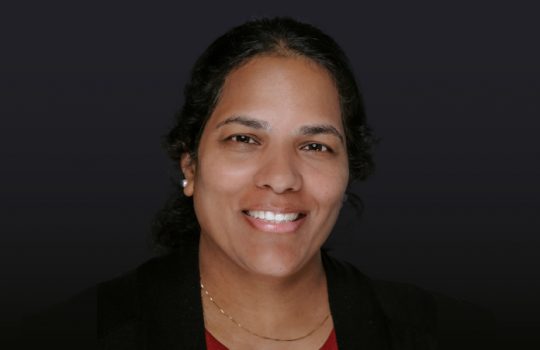The Proton Improvement Plan II project, known as PIP-II, is a billion-dollar enhancement to the U.S. Department of Energy’s Fermi National Accelerator Laboratory accelerator complex. The project is constructing a 215-meter-long state-of-the-art superconducting linear accelerator.

Pantaleo Raimondi. A world-renowned accelerator physicist, Raimondi will lead the PIP-II project, which is building the next-generation Fermilab accelerator complex. Photo: Pantaleo Raimondi
Not only will the new linear accelerator drive a broad physics research program, but it will also provide powerful, high-intensity proton beams. It will enable the world’s most intense neutrino beam to the Deep Underground Neutrino Experiment, DUNE, hosted by the Long-Baseline Neutrino Facility in Batavia, Illinois, and Lead, South Dakota. Once complete, DUNE will be the most comprehensive neutrino experiment ever built; scientists will use it to answer questions about why matter exists, how nature’s four forces could unify and how black holes are formed.
A world-renowned accelerator physicist, Pantaleo Raimondi will step in as PIP-II’s new project director on Dec. 4.
PIP-II has operated under the guidance of interim project director Rich Stanek since April 2022. Before that, Lia Merminga was the PIP-II project director for four years; she left the position when she was appointed director of Fermilab.
“I am extremely excited that Pantaleo accepted to undertake the role of PIP-II project director,” said Cristian Boffo, PIP-II project manager. “He is a world-renowned accelerator physicist with considerable know-how in building complex machines, and he will provide a tremendous boost to PIP-II. I am looking forward to working under his leadership and helping complete this crucial upgrade of the Fermilab accelerator complex.”
PIP-II is the first particle accelerator built in the U.S. with significant contributions from international partners. Institutions in France, India, Italy, Poland, the United Kingdom and the United States will bring together their expertise and capabilities in superconducting radio frequency and associated technologies to construct this state-of-the-art facility.
“Fermilab is a world-leading institution for particle physics and accelerator physics, and the PIP-II project will solidify this reputation,” said Raimondi, currently the Stanford Synchrotron Radiation Lightsource beam dynamics group head at SLAC National Accelerator Laboratory. “It is an honor for me to lead this project with the potential to change the field of physics.”
Raimondi has worked in particle physics since his graduate studies as part of the ALEPH Collaboration at CERN in Switzerland. After graduating, his career has pulled him back and forth between Frascati, Italy, and SLAC in Menlo Park, California. First at ENEA-Frascati in Italy, he worked on design and development of radiofrequency power systems, theoretical and technical analysis of linear accelerators and microtrons, beam transport studies and other topics related to electron accelerators. At SLAC, Raimondi worked on beam-based alignment and final focus systems.
Later, as head of the accelerator division at Italy’s National Institute for Nuclear Physics Frascati Laboratory, INFN-LNF, in Rome, he participated in commissioning DAFNE, an electron-positron collider. Raimondi contributed to improving the understanding and performance of DAFNE and developed new techniques to improve its luminosity.
One of Raimondi’s most impactful and lasting career achievements came when he was accelerator and source division director at the European Synchrotron Radiation Facility, or ESRF, in Grenoble, France. There he invented the concept of “extremely brilliant source,” or EBS, which became the basis of the latest upgrade of the ESRF synchrotron ring, a project that Raimondi successfully led and completed. His revolutionary design is now being replicated by all major synchrotron light sources around the world.
“Pantaleo is a brilliant accelerator physicist and a proven project manager. His leadership on the ESRF light source upgrade shows us that the PIP-II project is in more-than-capable hands,” said Lia Merminga, Fermilab director. “We couldn’t have found a better person to lead our flagship accelerator project that will usher in a new era for science!”
Fermi National Accelerator Laboratory is supported by the Office of Science of the U.S. Department of Energy. The Office of Science is the single largest supporter of basic research in the physical sciences in the United States and is working to address some of the most pressing challenges of our time. For more information, please visit science.energy.gov.



